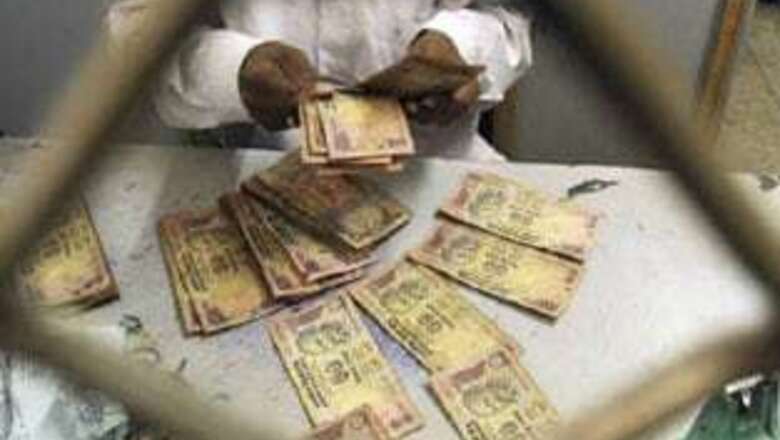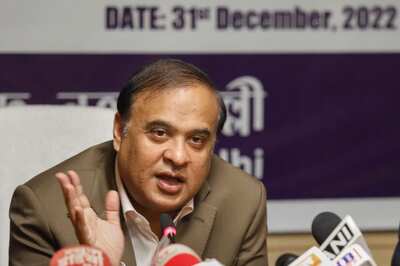
views
Mumbai: The government's push for financial access for hundreds of millions of the unbanked is helping secure its vote base and creating lucrative opportunities for financial institutions, technology and mobile services firms.
In his budget speech on Friday, Finance Minister Pranab Mukherjee may announce funds for a common technology platform to reach the goal of a banking outlet in every village of more than 2,000 people by March, 2011, senior government officials say.
The government may also say it will channel more welfare payments through banks, including the National Rural Employment Guarantee Act (NREGA), the flagship scheme which analysts say was key to the Congress-led government's re-election last year.
Less than half of the country's billion-plus population has a bank account; only about 10 percent have any kind of life insurance.
Access to financial services is key to equitable growth, for the government to derive the benefits of social security schemes and for bringing savings of the poor into the system and investing them, Reserve Bank of India Governor Duvvuri Subbarao has said.
"The bottom of the pyramid throws up a very big opportunity for commercial banks," said Manohara Raj, business head of microfinance at HDFC Bank, the No.2 private sector bank, using a popular marketing term to describe the poor.
"It is possible to tap this segment in a sustainable and increasingly profitable manner as customers move out of poverty."
Past legislation, including cooperative banks and priority sector lending, was also aimed at financial inclusion. But a watershed moment came in 2006, when then finance minister Palaniappan Chidambaram said in his budget speech banks could appoint microfinance institutions (MFIs) as Banking Correspondents (BCs) to accept deposits, remit money and perform other services.
The central bank has since allowed shop owners, petrol pump operators and retired teachers to also be banking correspondents, providing an option to moneylenders who charge high interest.
Top lender State Bank of India and others are hiring tens of thousands of BCs, who use smart cards, mobile phones and handheld devices to reach the poor and illiterate with little knowledge of financial services in India's vast hinterland.
It is a "powerful model" that helped Brazil go from numbers similar to India's to more than 80 percent financial inclusion in five years, said Nachiket Mor, president of ICICI Foundation.
"The timing is right and all the enablers are there: the regulation, the technology, and the central bank is on board. There's no reason now for so many to not have accounts," he said.
EXCITING OPPORTUNITY
Mukherjee on Friday is expected to announce at least a 15 percent rise in allocations to 450 billion rupees ($9.8 billion) for NREGA, the scheme launched in 2006 that guarantees 100 days of work in a year to one adult person in every rural family.
PAGE_BREAK
The Congress government's flagship welfare programme channels payments through post offices and banks; it is expected to direct more funds through banks to reduce transaction costs and leakage.
Subbarao, who often cites examples of people whose lives have changed with access to banking, has exhorted banks to follow the makers of soaps and sodas, and use their imagination to convert "a dead-weight obligation into an exciting opportunity".
While deposits may be small, the sheer volume will give banks an enormous, permanent float, and help them better manage liquidity risks and asset-liability mismatches, Subbarao has said.
What's kept banks from venturing fully into the hinterland is a lack of interest rather than bad economics, said Mor.
"There is no evidence that small accounts in villages are loss-making. Banks were simply unwilling to go into rural India."
Now, the government is keen for the money from its welfare schemes to reach its constituents, and is willing to offset some of the cost incurred by banks in expanding in rural India.
But there is a lack of supporting infrastructure and technology of scale including credit bureaus, biometric cards, national identification systems and robust mobile banking systems, according to a recent report by consultancy McKinsey.
India is addressing these issues: the central bank recently gave information services firm Experian the first licence to operate a credit bureau under new regulations.
The Unique Identity project, which may be the world's largest biometric database, will facilitate easier verification. Also, the central bank has asked all commercial banks to submit plans for financial inclusion by March.
Still, the big push will come from the government. "Ultimately, besides NGOs and MFIs, politicians are the only ones interested in rural India," said Mor. "So, if the finance minister says: it has to be done, something will get done."




















Comments
0 comment